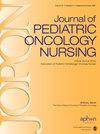Creative Arts Therapy in the Context of Children With Cancer: A Concept Analysis
IF 1.9
3区 医学
Q2 NURSING
引用次数: 14
Abstract
Aim: To report an analysis of the concept of creative arts therapy (CAT) in the context of pediatric cancer. Background: Literature supports the intuitive conclusion that creative interventions improve a patient’s journey through the cancer trajectory. However, a new definition is needed to encompass CAT and creative expression interventions in order to better understand the concept of creativity in health care, specifically in pediatric oncology. Design: Concept analysis. Data Sources: The scientific databases CINAHL, PsycInfo (Ovid), AMED (Allied and Complementary Medicine), and PubMed were queried for English language research articles published between 2008 and 2018 using the search terms: creative arts therapy and cancer. Method: The Walker and Avant method of concept analysis was implemented. Results: CAT is a broad concept bringing creative arts in a therapeutic manner to children with cancer. Attributes include expression of feelings; creating art, music, or movement; and improvement of symptoms. CAT is frequently measured using quality of life and symptom assessment scales. Antecedents include the diagnosis of cancer, the distress caused by cancer, and a child’s willingness to participate in creative activity. Consequences include improved quality of life, improved sense of well-being, decreased psychosocial symptoms, and less cancer pain. Conclusion: The literature supports CAT as a concept that may decrease distress for children with cancer.癌症儿童创造性艺术治疗的概念分析
目的:分析儿童癌症治疗中创造性艺术治疗的概念。背景:文献支持这样一个直观的结论,即创造性干预可以改善患者的癌症发展历程。然而,需要一个新的定义来涵盖CAT和创造性表达干预措施,以便更好地理解卫生保健,特别是儿科肿瘤学中的创造性概念。设计:概念分析。数据来源:在科学数据库CINAHL、PsycInfo (Ovid)、AMED (Allied and Complementary Medicine)和PubMed中查询了2008年至2018年间发表的英语研究文章,搜索词为:创造性艺术疗法和癌症。方法:采用Walker和Avant概念分析法。结果:CAT是一个宽泛的概念,将创造性艺术以治疗的方式带给患有癌症的儿童。属性包括情感的表达;创造艺术、音乐或运动的;以及症状的改善CAT通常使用生活质量和症状评估量表进行测量。前因包括癌症的诊断,癌症引起的痛苦,以及孩子参与创造性活动的意愿。结果包括改善生活质量,改善幸福感,减少心理社会症状,减少癌症疼痛。结论:文献支持CAT作为一个概念,可以减少患癌儿童的痛苦。
本文章由计算机程序翻译,如有差异,请以英文原文为准。
求助全文
约1分钟内获得全文
求助全文
来源期刊
CiteScore
3.10
自引率
0.00%
发文量
0
审稿时长
>12 weeks
期刊介绍:
SPECIAL PATIENTS NEED SPECIAL NURSES
Caring for children with cancer is one of the most technically and emotionally difficult areas in nursing. Not only are you dealing with children and adolescents who hurt, you must reassure and educate families, balance a multitude of other health care professionals, and keep up with ever-changing nursing practice and care. To help special nurses stay aware of the newest effective nursing practices, innovative therapeutic approaches, significant information trends, and most practical research in hematology and pediatric oncology nursing, you need the Journal of Pediatric Oncology Nursing.
The journal offers pediatric hematology, oncology, and immunology nurses in clinical practice and research, pediatric social workers, epidemiologists, clinical psychologists, child life specialists and nursing educators the latest peer-reviewed original research and definitive reviews on the whole spectrum of nursing care of childhood cancers, including leukemias, solid tumors and lymphomas, and hematologic disorders. JOPON covers the entire disease process--diagnosis, treatment, recovery, and survival, as well as end-of-life care.
Six times a year, the Journal of Pediatric Oncology Nursing introduces new and useful nursing care practice and research from around the world that saves you time and effort. Just some of the spirited topics covered include:
Cancer survivorship including later-life effects of childhood cancer, including fertility, cardiac insufficiency, and pulmonary fibrosis
Combination therapies
Hematologic and immunologic topics
Holistic, family-centered supportive care
Improvement of quality of life for children and adolescents with cancer
Management of side effects from surgery, chemotherapy, and radiation
Management of specific symptoms/diseases/co-infections
Medication tolerance differences in children and adolescents
Pain control
Palliative and end of life care issues
Pharmacologic agents for pediatrics/clinical trial results
Psychological support for the patient, siblings, and families
The dynamic articles cover a wide range of specific nursing concerns, including:
Advanced practice issues
Clinical issues
Clinical proficiency
Conducting qualitative and quantitative research
Developing a core curriculum for pediatric hematology/oncology nursing
Encouraging active patient participation
Ethical issues
Evaluating outcomes
Professional development
Stress management and handling your own emotions
Other important features include Guest Editorials from experts in the discipline, Point/Counterpoint debates, Roadmaps (personal insights into the nursing experience), and Proceedings and Abstracts from the annual Association for Pediatric Hematology/Oncology Nurses (APHON) conference.
Your special patients need special nurses--stay special by subscribing to the Journal of Pediatric Oncology Nursing today!
This journal is a member of the Committee on Publication Ethics (COPE).

 求助内容:
求助内容: 应助结果提醒方式:
应助结果提醒方式:


